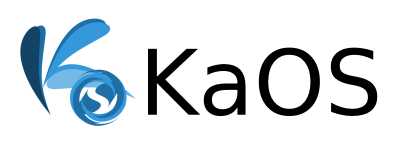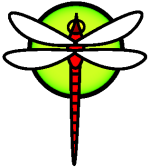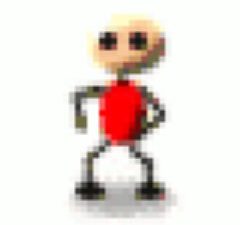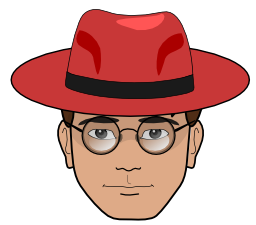Today I’m glad to interview Anke Boersma, a friend I got to know in 2013 thanks to my forays into the OSS world. Her contributions to the cause led to nothing less than the creation of a Linux distribution from scratch. Let’s find out a little about the history of KaOS creation.
Who are the creator(s) of KaOS or “introduce yourself to the readers”
When did you get in contact with computers?
Do you remember when and why you first used open source?
The husband of a customer of mine introduced me to Knoppix in 2001. I received some floppy disks I could try and use in Live mode. For the next two years, I regularly tried to work with and start to understand this very different system, initially not with much luck or seeing a real need to use it.
That changed around 2004-2005 when I started using computers for advertising, promoting and freestyle editing. Scribus is actually the program that made me switch to Linux the most. There was no way I was going to fork over more than a thousand dollars for a good copy of Adobe’s creative suite and I needed something good and complete for desktop publishing. I found that Scribus was a very good alternative for me, but the Windows version had a lot of issues, being slow, hanging regularly. Since it was clear it really was developed on and for Linux, I ordered a few CDs of different Linux distributions to try and see if I could make it work with Linux. Running Scribus on any of them was no issue and miles better than on Windows, thus I started having a second (older, leftover pc) running Linux. That stayed for about three years and since 2008 I pretty much fully switched to Linux.
It was during this period that I started to see what the monopoly of closed source could do to the quality of software. Internet Explorer had created a monopoly for web browser software and once it had market dominance, there was no longer an interest in improving that browser, nor had anyone with an interest in improving access to the code. Since then it was important to me to support opensource as much as possible.
Why did you start getting involved in open source projects? When was it?
That is when I decided to start helping with one such small, ambitious and great design distribution. Initially, it was just testing, but within a few months, I started packaging for this distribution. Eventually, forum moderation, documentation writing, website maintenance, some basic coding, and mentoring new packagers were added.
Why did you create KaOS?
I had been dabbling a little with Linux from Scratch in 2011 & 2012, so by early 2013 I used some of my LFS experience, the knowledge I had gained of using pacman & makepkg the last three years and general experience in packaging to create a distribution for myself and a few of my friends and customers in southeastern US, thus KaOS was started.
Since I had seen quite a few times, the biggest downfall for starting distributions is to try and do too much and Linux distributions in general do not want to make choices, KaOS was a big departure from that. It deliberately was very limited with simple goals and strict choices (one desktop environment, one toolkit, one soundstack, one init system, repositories with a maximum of about 2000 packages).
KaOS has been a rock-solid foundation for my computer needs, being it as a work station, buildserver or web server. Since it was easier to have my customers who also used KaOS get the needed updates from a server, KaOS packages and a simple website went online in April 2013. About two months later some Linux enthusiasts in South America had discovered the website and started blogging about KaOS, so slowly it came to a decision to move it to a more public distribution. By late 2013 it was public, though it was lacking a proper installer.
In 2014 I was involved in the foundation of Calamares, now a widespread used, distro-agnostic system installer, thus by late 2014, KaOS also had a proper installer. My contributions to Calamares were mainly in Python, though a little C++ code was added too, plus work on the initial website.
Tell us how is the maintenance routine of a Linux distro. How many hours of work, which tools you use, hardware involved, websites you have to follow, etc.
Coding on tools (or website) for KaOS is not as regularly, but when working on those it usually takes the better part of a day.Main system is a self-build desktop PC (motherboard, 4 core AMD CPU, AMD gpu, 12 Gb RAM from about 2014), Intel laptop for testing. The buildserver in Sweden is much more powerful then my own hardware (14 core AMD CPU, 32 Gb RAM).
Most used tool is the KaOS buildsystem. As for tools used, I have gone more and more simple, no more fancy IDE for website editing or coding, most is done with Yakuake, Kate and Dolphin. Just QTCreator has been used quite a bit for KaOS applications creation. Eric6 to help some with correct python coding.
For the design parts, my favorite tools are Krita, Inkscape, and KDEnlive.I subscribe to many mailing lists to stay up to date for new releases and security alerts. Some of the sites regularly used:
http://www.linuxfromscratch.org/
https://packages.gentoo.org/packages/updated
http://www.spinics.net/lists/kernel/
https://cgit.kde.org/?s=idle
https://distrowatch.com/
https://git.kernel.org/pub/scm/linux/kernel/git/firmware/linux-firmware.git
https://github.com/aarnt/octopi/
https://github.com/calamares/calamares
http://download.qt-project.org/
http://lists.freedesktop.org/archives/systemd-devel/
http://lists.freedesktop.org/archives/xorg/
https://download.kde.org/stable/
https://www.archlinux.org/packages/?flagged=Flagged&sort=-flag_date
http://googlechromereleases.blogspot.com/
https://bugs.kde.org/describecomponents.cgi
Does open source pay your bills?
What are your other activities beyond computers/open source?
We always need help. Tell us what kind of help would be welcome if you were to ask for?
Testers with all kinds of hardware to help prepare new ISO releases. Artists to keep the look of KaOS modern and different. Pull requests for all parts of KaOS. All code is on Github, just to make it easy for anyone to fork any project and contribute. Donations (having more hardware would help a lot with quality control, option to have KaOS as a part-time job instead of just volunteer work).
How can readers contact you if they get interested in your project? Preferred websites, social links, forums, etc?
https://forum.kaosx.us/
https://kiwiirc.com/client/irc.freenode.net/#kaosx
https://gitter.im/KaOSx/KaOS/
https://github.com/KaOSx
Thank you very much for your hard work, Anke!



